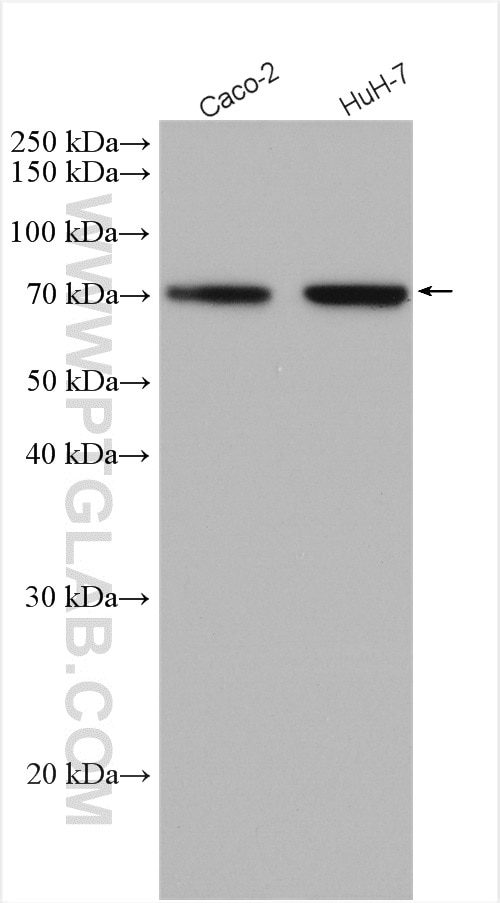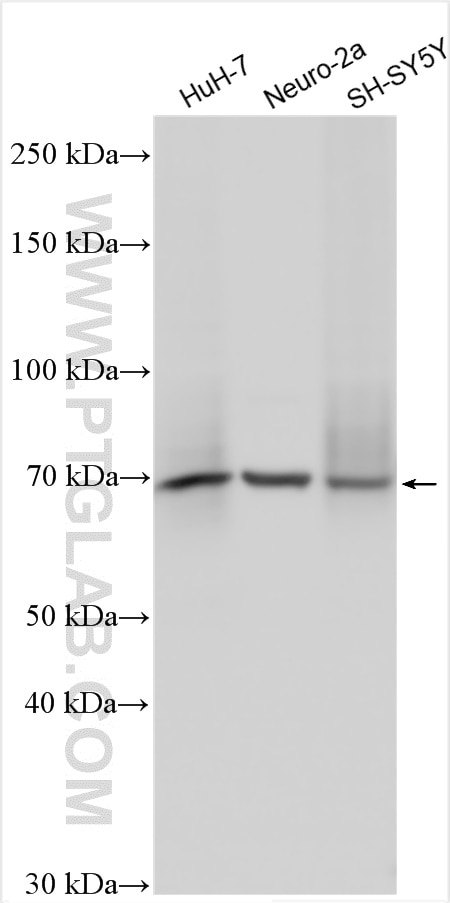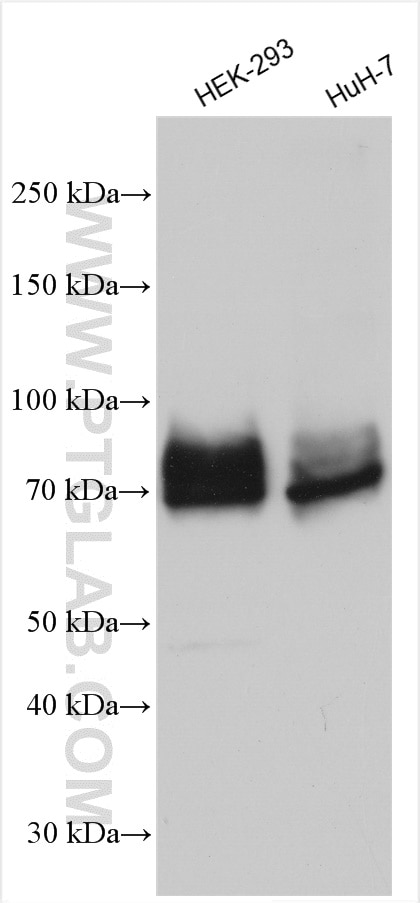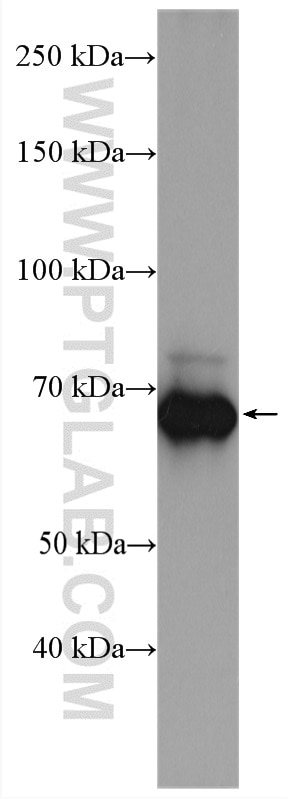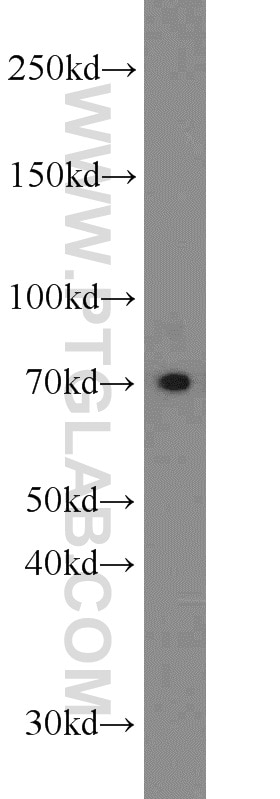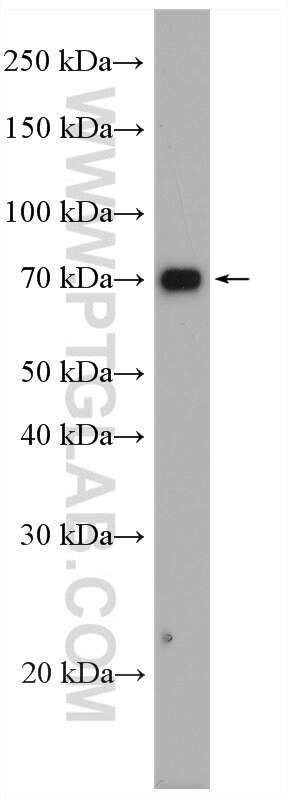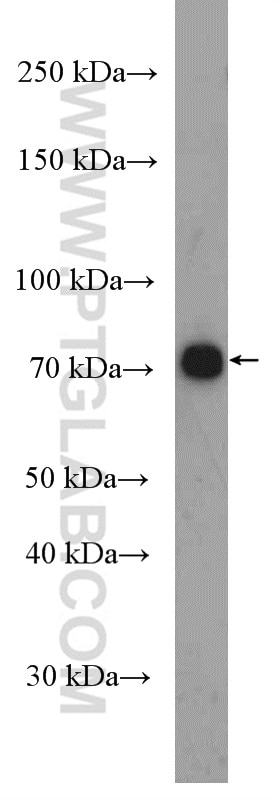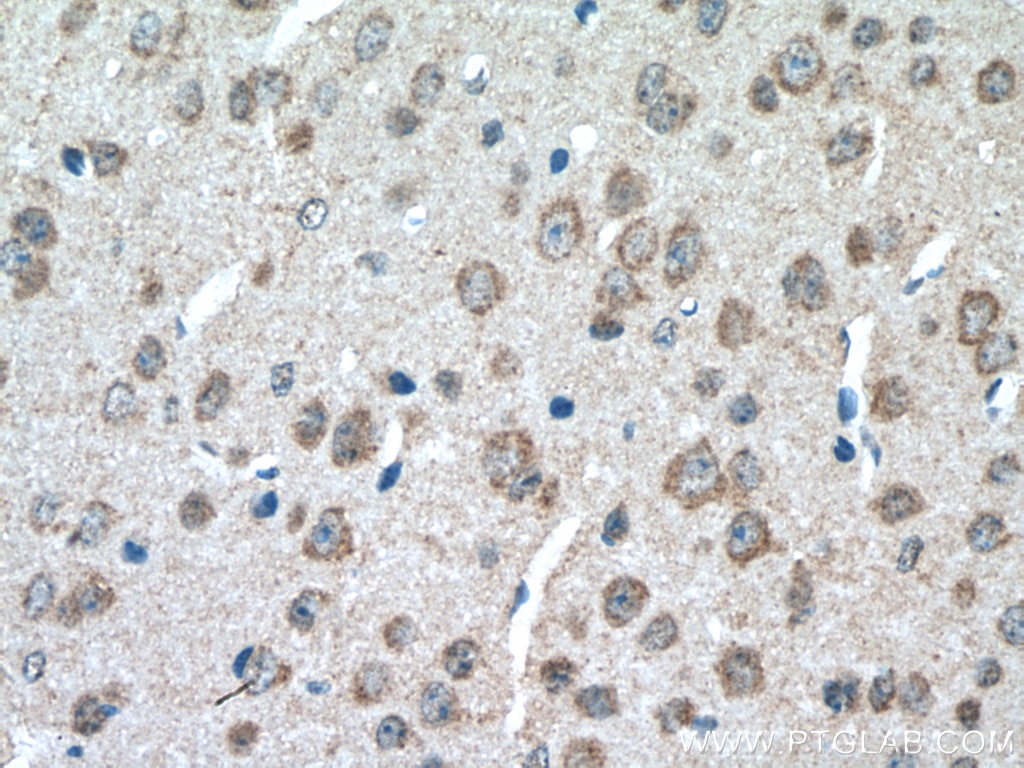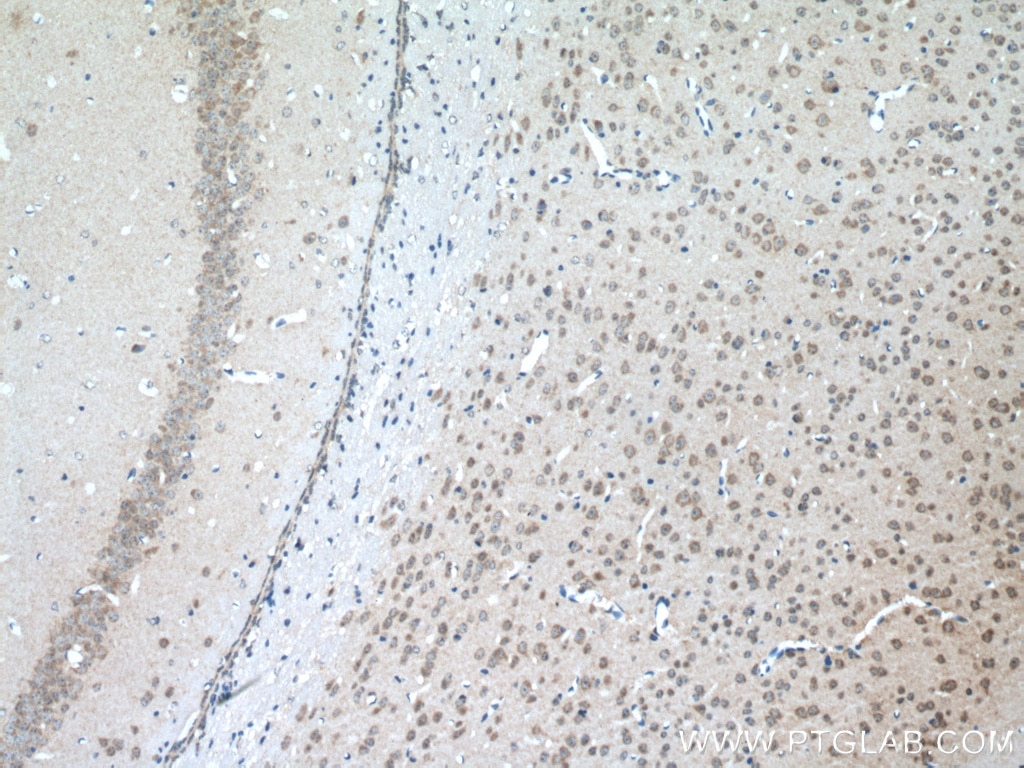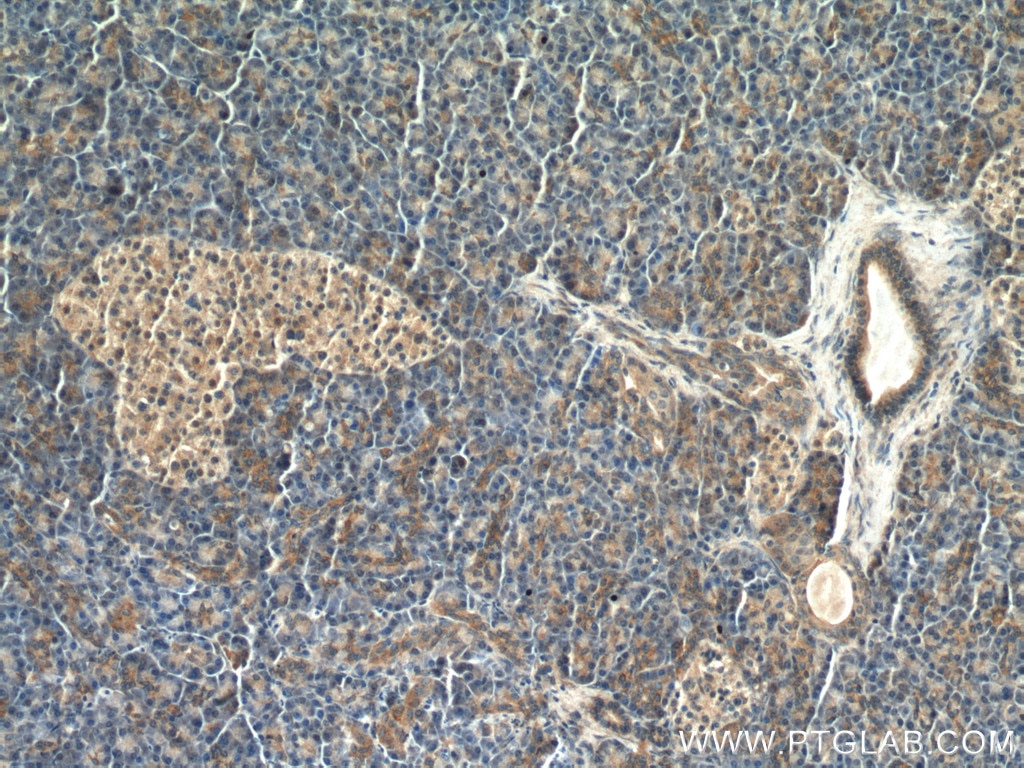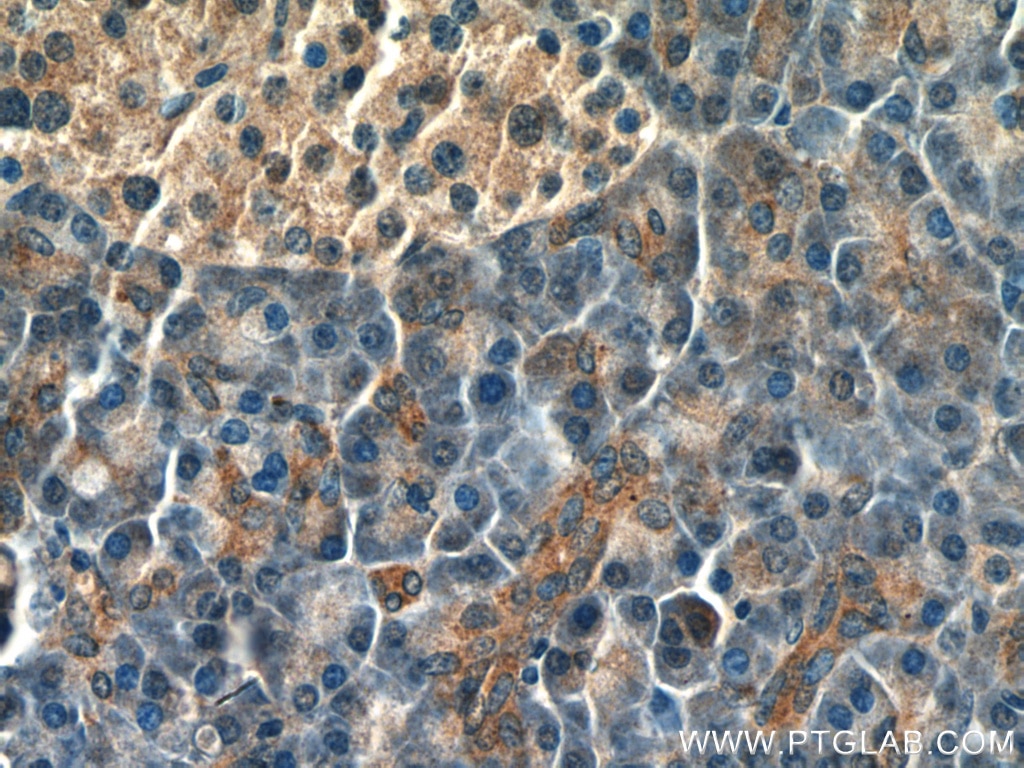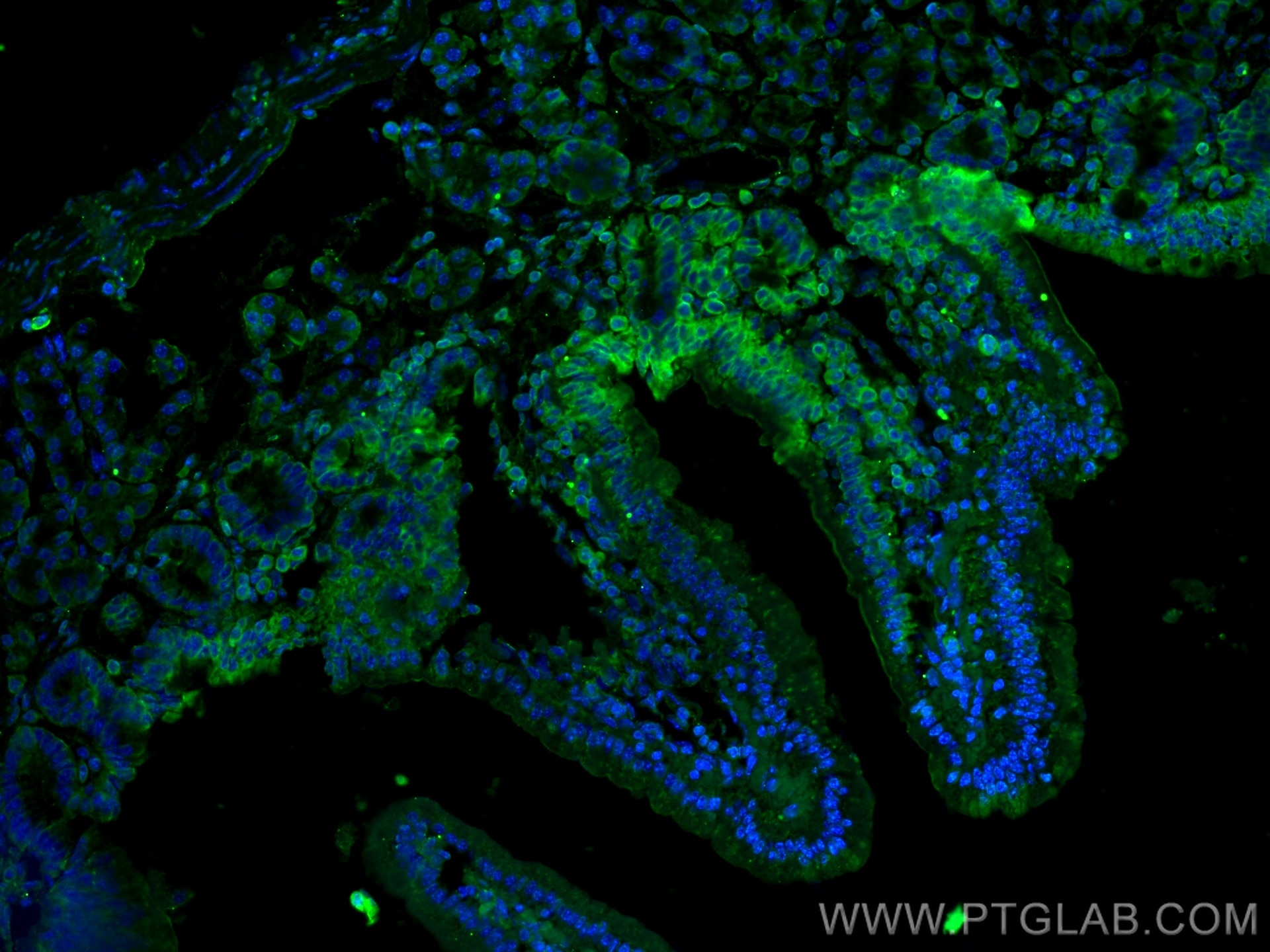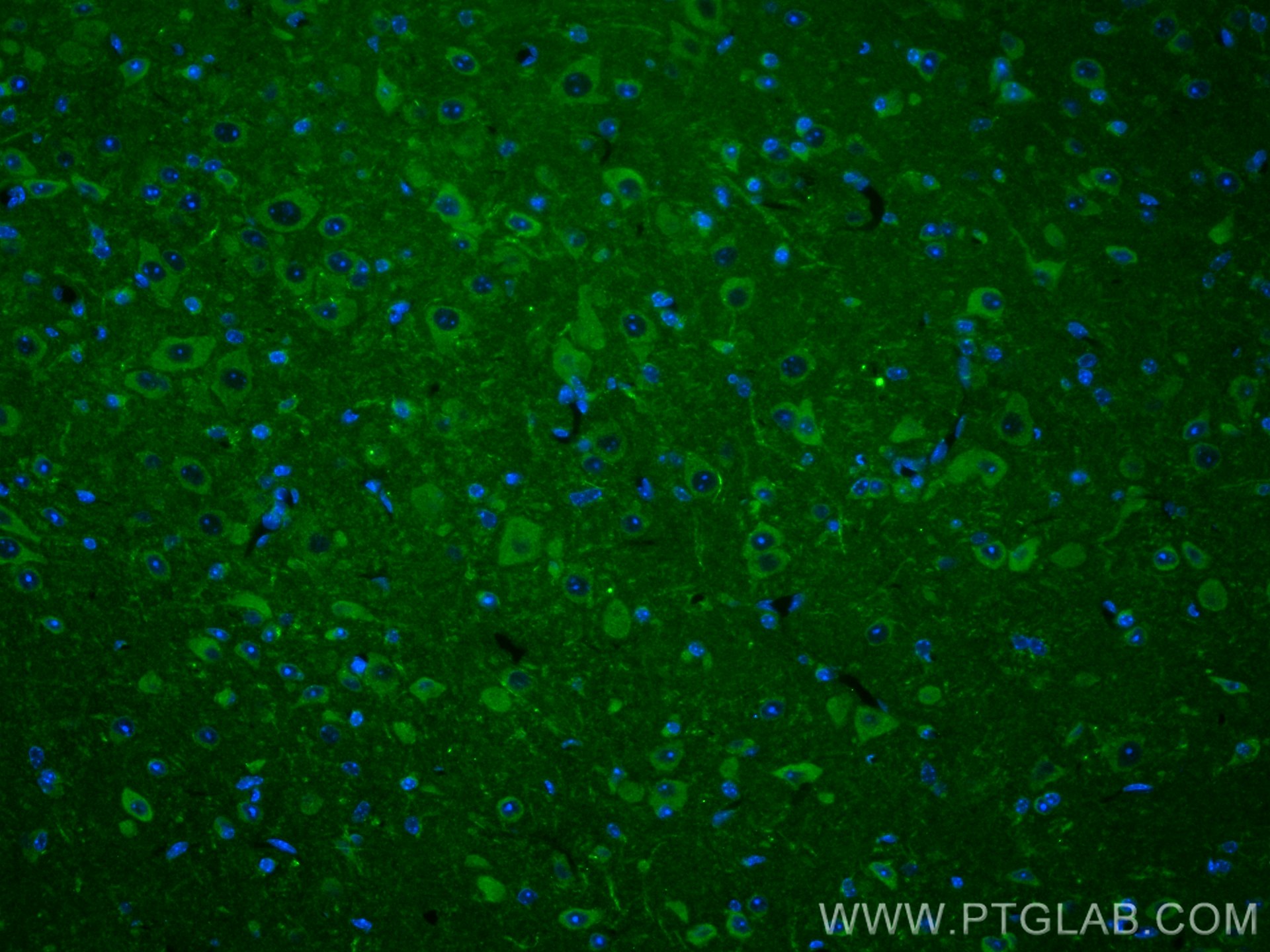- Featured Product
- KD/KO Validated
DMT1 Polyklonaler Antikörper
DMT1 Polyklonal Antikörper für IF, IHC, WB, ELISA
Wirt / Isotyp
Kaninchen / IgG
Getestete Reaktivität
human, Maus, Ratte und mehr (2)
Anwendung
WB, IHC, IF, ELISA
Konjugation
Unkonjugiert
Kat-Nr. : 20507-1-AP
Synonyme
Galerie der Validierungsdaten
Geprüfte Anwendungen
| Erfolgreiche Detektion in WB | HuH-7-Zellen, Caco-2-Zellen, COLO 320-Zellen, Neuro-2a-Zellen, Rattennierengewebe, SH-SY5Y-Zellen |
| Erfolgreiche Detektion in IHC | Maushirngewebe, humanes Pankreasgewebe Hinweis: Antigendemaskierung mit TE-Puffer pH 9,0 empfohlen. (*) Wahlweise kann die Antigendemaskierung auch mit Citratpuffer pH 6,0 erfolgen. |
| Erfolgreiche Detektion in IF | Maus-Dünndarmgewebe, Maushirngewebe |
Empfohlene Verdünnung
| Anwendung | Verdünnung |
|---|---|
| Western Blot (WB) | WB : 1:1000-1:4000 |
| Immunhistochemie (IHC) | IHC : 1:50-1:500 |
| Immunfluoreszenz (IF) | IF : 1:400-1:1600 |
| It is recommended that this reagent should be titrated in each testing system to obtain optimal results. | |
| Sample-dependent, check data in validation data gallery | |
Veröffentlichte Anwendungen
| KD/KO | See 5 publications below |
| WB | See 66 publications below |
| IHC | See 3 publications below |
| IF | See 4 publications below |
Produktinformation
20507-1-AP bindet in WB, IHC, IF, ELISA DMT1 und zeigt Reaktivität mit human, Maus, Ratten
| Getestete Reaktivität | human, Maus, Ratte |
| In Publikationen genannte Reaktivität | human, Hausschwein, Huhn, Maus, Ratte |
| Wirt / Isotyp | Kaninchen / IgG |
| Klonalität | Polyklonal |
| Typ | Antikörper |
| Immunogen | DMT1 fusion protein Ag14314 |
| Vollständiger Name | solute carrier family 11 (proton-coupled divalent metal ion transporters), member 2 |
| Berechnetes Molekulargewicht | 568 aa, 62 kDa |
| Beobachtetes Molekulargewicht | 60-70 kDa |
| GenBank-Zugangsnummer | BC002592 |
| Gene symbol | SLC11A2 |
| Gene ID (NCBI) | 4891 |
| Konjugation | Unkonjugiert |
| Form | Liquid |
| Reinigungsmethode | Antigen-Affinitätsreinigung |
| Lagerungspuffer | PBS mit 0.02% Natriumazid und 50% Glycerin pH 7.3. |
| Lagerungsbedingungen | Bei -20°C lagern. Nach dem Versand ein Jahr lang stabil Aliquotieren ist bei -20oC Lagerung nicht notwendig. 20ul Größen enthalten 0,1% BSA. |
Hintergrundinformationen
SLC11A2 (also known as DMT1, Nramp2, and DCT1) is a member of the divalent cation transporters that play a central role in iron homeostasis. SLC11A2 is widely expressed in many tissues including the brain, kidney, testis, duodenum, and placenta. As a membrane protein, SLC11A2 is localized on the apical membrane of enterocytes as well as in transferrin-cycle endosomes. Four isoforms of SLC11A2 exist due to the alternative splicing. They differ at the NH2 and COOH termini but share a common central domain. A variety of molecular weights of SLC11A2 in western blot analysis, ranging from 50 to 100 kDa, has been reported in different cells and species. The differences in molecular weights may be attributed to the level of glycosylation, proteolysis, or the membrane protein itself. This antibody detected various forms of SLC11A2 of 45-100 kDa.
Protokolle
| Produktspezifische Protokolle | |
|---|---|
| WB protocol for DMT1 antibody 20507-1-AP | Protokoll herunterladen |
| IHC protocol for DMT1 antibody 20507-1-AP | Protokoll herunterladen |
| IF protocol for DMT1 antibody 20507-1-AP | Protokoll herunterladen |
| Standard-Protokolle | |
|---|---|
| Klicken Sie hier, um unsere Standardprotokolle anzuzeigen |
Publikationen
| Species | Application | Title |
|---|---|---|
Blood Defective palmitoylation of transferrin receptor triggers iron overload in Friedreich ataxia fibroblasts. | ||
Acta Neuropathol Seizure-mediated iron accumulation and dysregulated iron metabolism after status epilepticus and in temporal lobe epilepsy. | ||
Mol Cell Maintaining Iron Homeostasis Is the Key Role of Lysosomal Acidity for Cell Proliferation. | ||
Nat Commun Wipi3 is essential for alternative autophagy and its loss causes neurodegeneration. | ||
Transl Res Hepcidin attenuates the iron-mediated secondary neuronal injury after intracerebral hemorrhage in rats. | ||
Redox Biol Apolipoprotein E deficiency induces a progressive increase in tissue iron contents with age in mice. |
